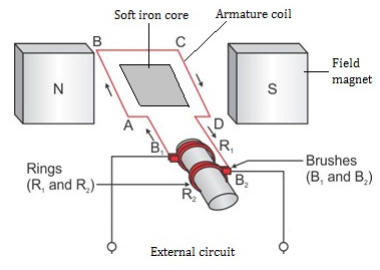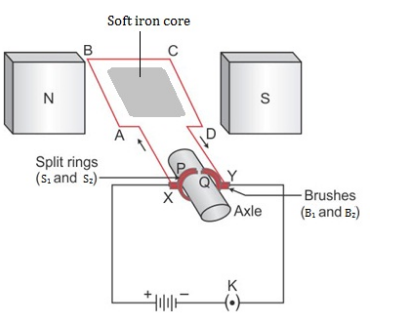Why is slip ring used in an AC Generator instead of split parts of slip ring (as used in DC Motor)?
AC generator :
An AC generator is a device which converts mechanical energy into electrical energy using the principle of electromagnetic induction.

Slip rings provide a means for connecting the rotating armature of a simple a.c. generator to an external circuit. As the armature naturally produces an alternating voltage, an alternating voltages appears across the slip rings. There are two coaxial metallic rings R1 and R2. They rotate along with the coil. One end of the coil is connected to the slip ring R1, and the other end of the coil is connected to the slip ring R2. Each ring slips against the brush which is stationary. Two carbon brushes B1 and B2 press gently against the slip rings R1 and R2, respectively. The other ends of brushes act as terminals of the generator for the external circuit. The external circuit (i.e. load) is connected between the other ends of brushes. The brushes B1 and B2 do not rotate along with the coil and the slip rings.
DC motor :
An electric motor is a device which converts electrical energy into mechanical energy.

To obtain a d.c. voltage, it is necessary to reverse the direction of the natural alternating voltage every half cycle, producing full wave rectification. This is achieved using a split-ring commutator which, essentially, is a rotating switch. Whenever the coil passes from the vertical position, the direction of current through the coil has to be reversed so that the coil continues to rotate in the same direction. Hence, the two parts S1 and S2 of the split ring are used to act as a commutator to reverse the direction of current in the coil, so they are called the split ring commutator.
So, slip rings are used with simple a.c. generators, whereas a commutator is used with d.c. motors.